CATH CMD is a global algorithm that captures the essential details of performing the bolus thermodilution workflow and assists in decision-making in a simple and stepwise manner. In summary, CATH captures the how to perform bolus thermodilution and CMD captures the what to do with the Index of Microcirculatory Resistance (IMR) and Coronary Flow Reserve (CFR) measurements to provide a diagnosis of Coronary Microvascular Dysfunction (CMD).
A full physiology assessment (with Resting full-cycle Ratio (RFR), Fractional Flow Reserve (FFR), IMR and CFR) of the epicardial arteries and the microvasculature can provide patients with persistent angina an accurate diagnosis to improve outcomes.1
Now Published in JSCAI
Did you know a standardized approach to CMD assessment can enhance your workflow in the cath lab? Learn how the CATH CMD algorithm can help streamline the assessment of CMD and improve patient outcomes.
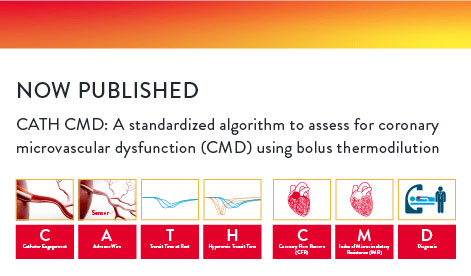

Catheter Engagement
- Flush thoroughly2
- Coaxial guide engagement2
- Ensure no damping2
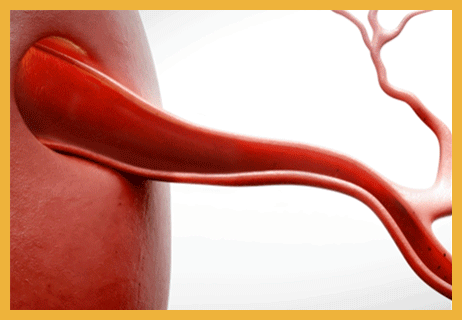
Advance Wire
- Interrogate LAD unless there is a specific territory of interest1
- Advance wire sensor 2/3 distally in vessel3
- Administer GTN/NTG2
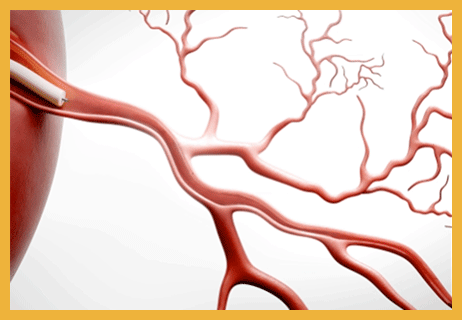
Transit Time at Rest
- Flush/purge pre-Tmnrest to clear any blood and contrast3
- Room temperature saline3
- Brisk 3 mL x 3 injections3
- Address outliers (± 0.25s) before proceeding*4
*Repeat measurement of Tmnrest

Hyperemic Transit Time
- Induce hyperemia5
- Confirm hyperemia*6
- Flush/purge pre-Tmnhyp to clear any blood and contrast6
- Room temperature saline6
- Brisk 3 mL x 3 injections6
- Address outliers (± 0.15s) before proceeding**4
*Decrease in pressure, patient symptoms, FFR drop
**Repeat measurement of Tmnhyp

Coronary Flow Reserve (CFR)
- CFR <2.5*4
- CFR gray zone 2.0-2.4*
*Evolving concensus

Index of Microcirculatory Resistance (IMR)
- IMR ≥251
- Use IMRcorr if FFR ≤0.807

Diagnosis
- Diagnosis of CMD based on IMR ≥25 and CFR <2.5*1,4
- CFR gray zone 2.0-2.4*
- Refer to guidelines and consensus document1,4,8,9
*Evolving consensus

GTN (glyceryl trinitrate) | NTG (nitroglycerin) | LAD (left anterior descending) | FFR (fractional flow reserve) | IMRcorr (IMR corrected) | CMD (coronary microvascular dysfunction) | Tmnrest (resting transit mean time) | Tmnhyp (hyperemic transit mean time)
Why is the Diagnosis of CMD so Important
Dr. Tom Ford
Why is the Diagnosis of CMD so Important
Prof. Filippo Crea, MD
Getting Started with CATH CMD: A Simplified Approach to Full Physiology
An Interview with Dr. Takayuki Warisawa
How Full Physiology Assessment Gets Easier with CATH CMD
An Interview with Dr. Tommaso Gori
How Full Physiology Assessment Gets Easier with CATH CMD
An Interview with Dr. William Fearon
How to Uncomplicate Coronary Microvascular Dysfunction (CMD)
An Interview with Dr. Andy Yong
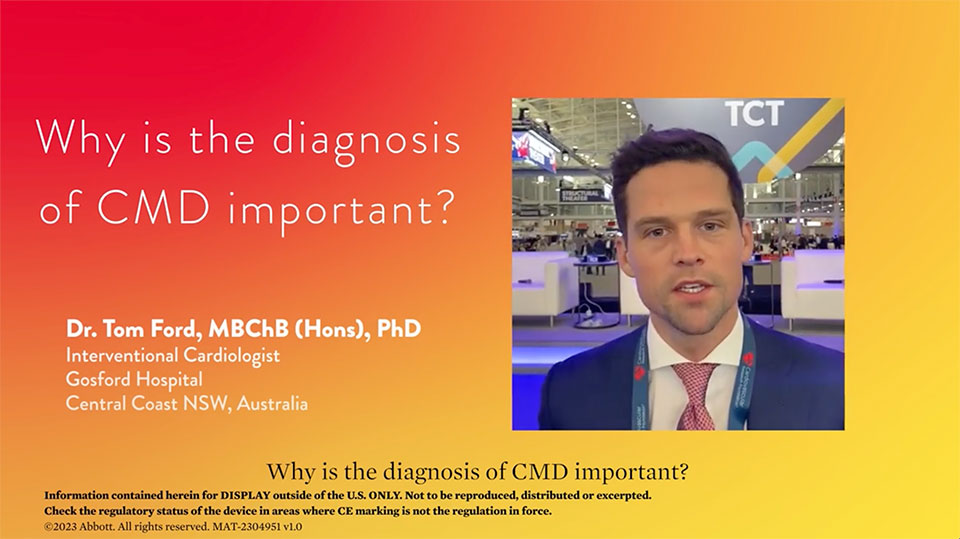
Why is the Diagnosis of CMD so Important
Dr. Tom Ford
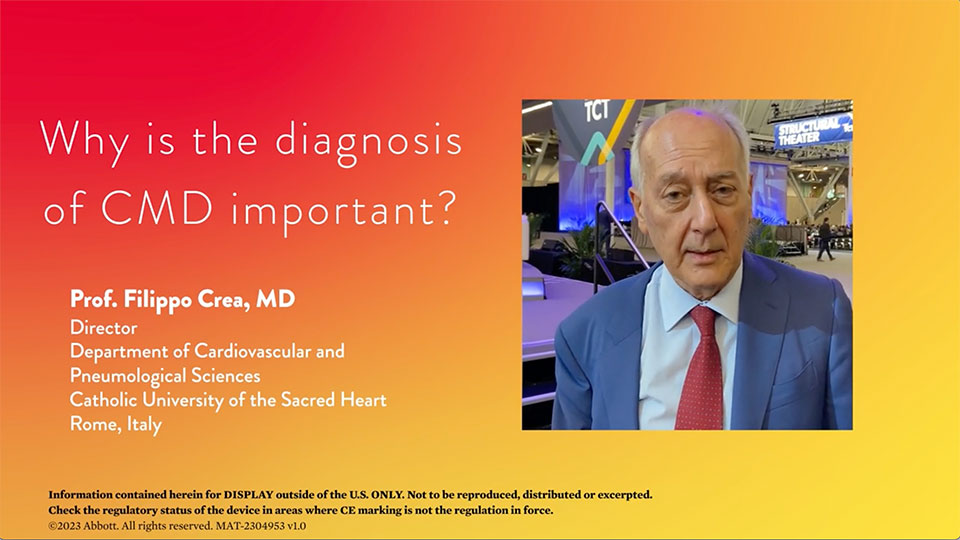
Why is the Diagnosis of CMD so Important
Prof. Filippo Crea, MD

Getting Started with CATH CMD: A Simplified Approach to Full Physiology
An Interview with Dr. Takayuki Warisawa
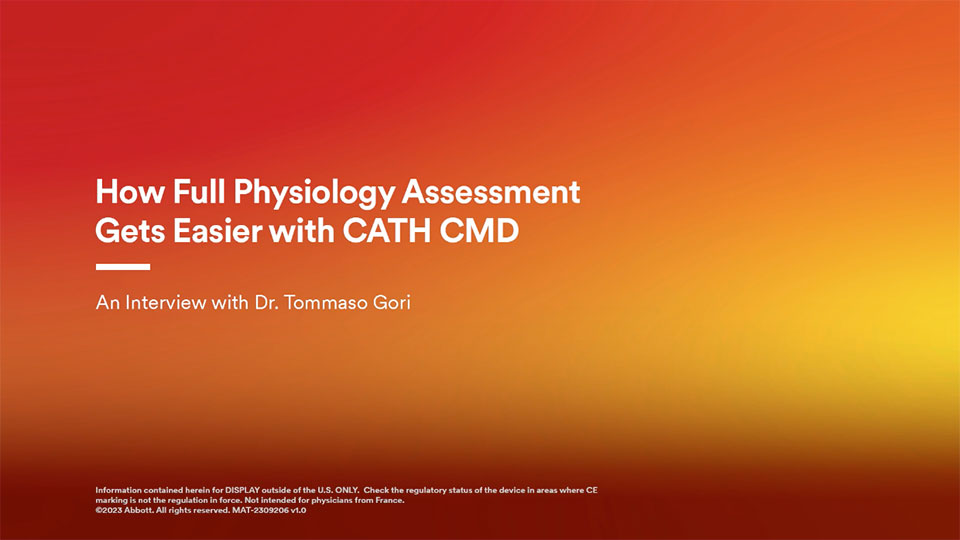
How Full Physiology Assessment Gets Easier with CATH CMD
An Interview with Dr. Tommaso Gori
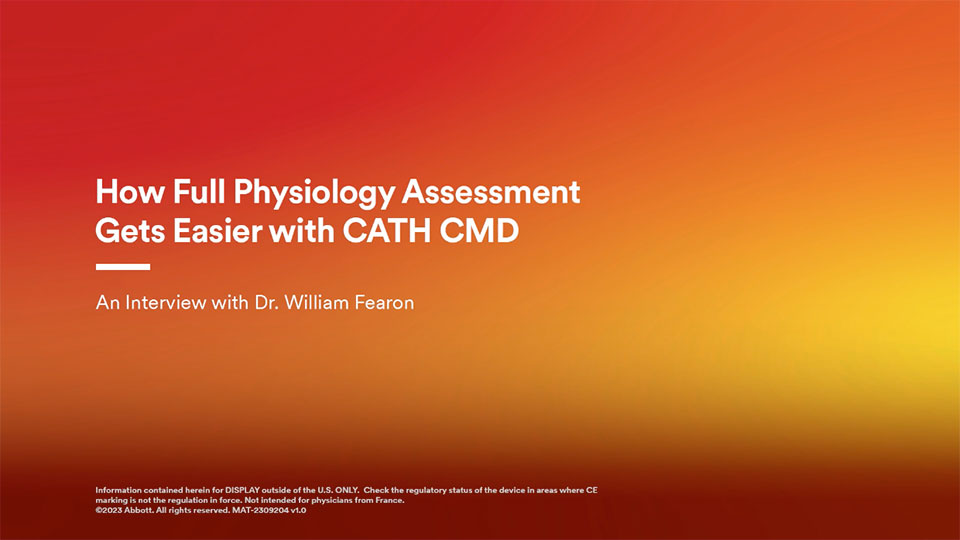
How Full Physiology Assessment Gets Easier with CATH CMD
An Interview with Dr. William Fearon
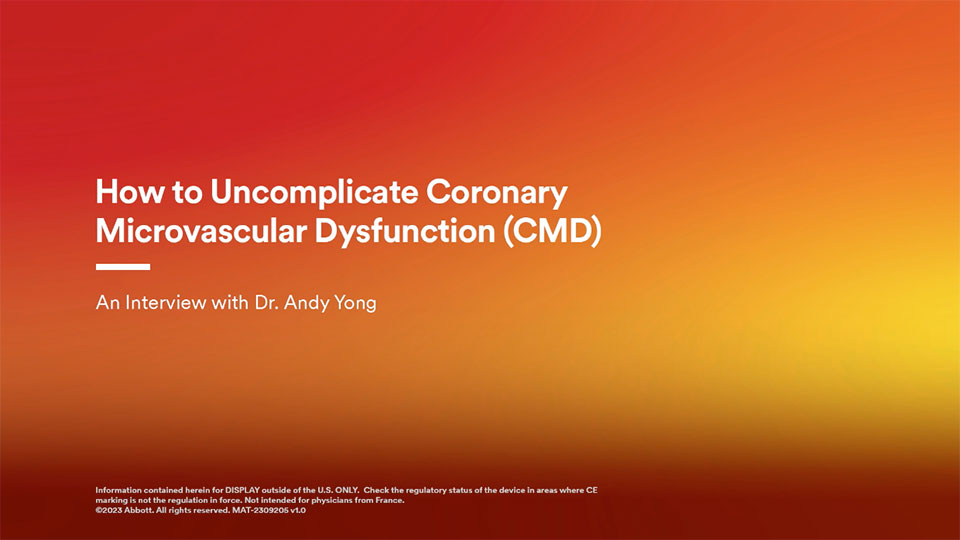
How to Uncomplicate Coronary Microvascular Dysfunction (CMD)
An Interview with Dr. Andy Yong
References
- Kunadian V, et al. EAPCI Expert Consensus Document on Ischaemia with Non-Obstructive Coronary Arteries. EHJ. 2020; 0, 1-21.
- Berry C. Fractional Flow Reserve, Coronary Flow Reserve and the Index of Microvascular Resistance in Clinical Practice. Radcliffe Cardiology. 2014, 1-6.
- Fearon W, et al. Invasive Assessment of the Coronary Microvasculature: The Index of Microcirculatory Resistance. Circ Cardiovasc Interv. 2017; 10:e005361
- Perera D, et al. Invasive coronary physiology in patients with angina and non-obstructive coronary artery disease. Heart. 2022; 0, 1-8.
- Ford T, et al. Stratified Medical Therapy Using Invasive Coronary Function Testing in Angina: The CorMicA Trial. JACC. 2018, 72, 2841-55.
- Ang D, et al. Interventional Diagnostic Procedure: a Practical Guide for the Assessment of Coronary Vascular Function. JOVE 2022; 181, e2265.
- Yong A, et al. Calculation of the Index of Microcirculatory Resistance Without Coronary Wedge Pressure Measurement in the Presence of Epicardial Stenosis. JACC: Cardiovasc Interv. 2013; 6, 53-8.
- Knuuti J, et al. ESC guidelines. EHJ. 2020; 41, 407-477.
- Gulati M, et al. 2021 Chest Pain Guideline, Circulation. 2021; 144, e368-e454.
MAT-2211746 v3.0
